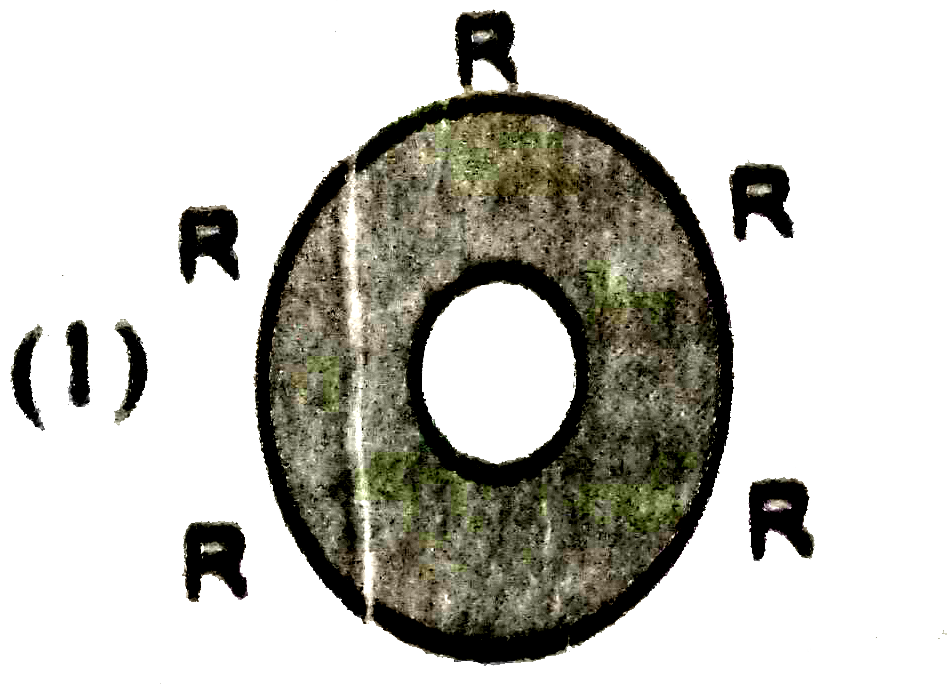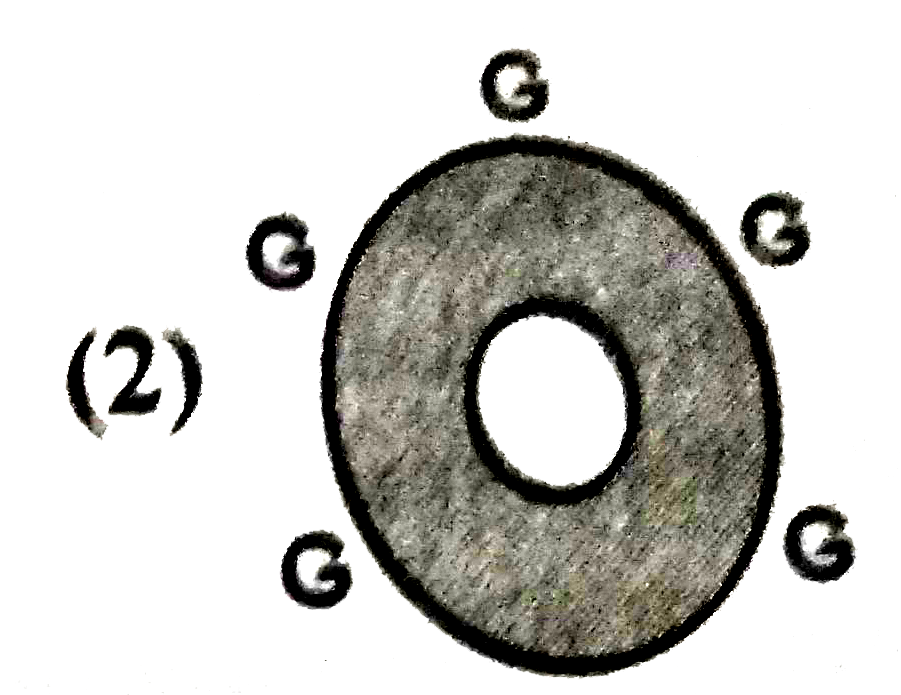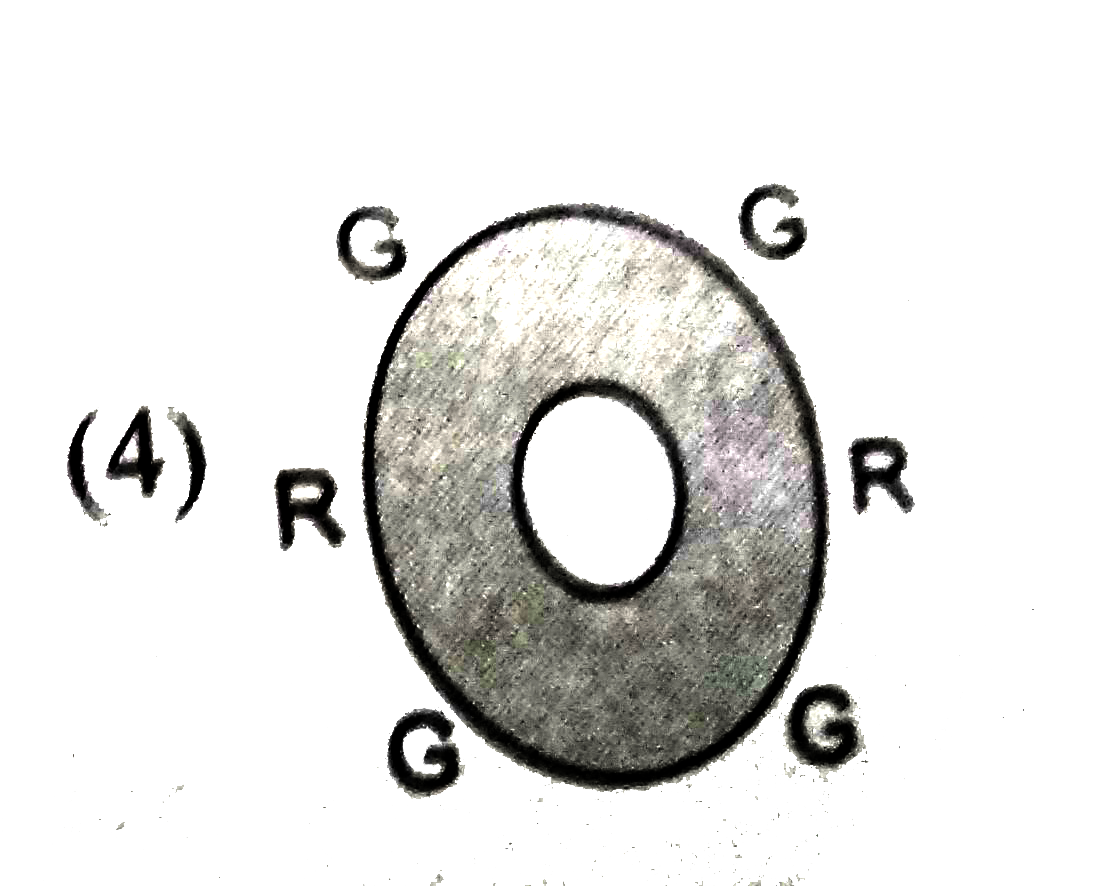Man and mouse cells are treated with red and green fluorescent dyes separately and are made to fuse. The resultant eel ls when kept at 37∘C, the distribution of dye on the surface of cell will be




The correct Answer is:D
Step by step video, text & image solution for Man and mouse cells are treated with red and green fluorescent dyes separately and are made to fuse. The resultant eel ls when kept at 37^(@)C, the distribution of dye on the surface of cell will be by Biology experts to help you in doubts & scoring excellent marks in Class 11 exams.
Updated on:21/07/2023Topper's Solved these Questions
- CELL: STRUCTURE AND FUNCTIONSBOOK - CENGAGE BIOLOGYCHAPTER - CELL: STRUCTURE AND FUNCTIONSEXERCISE - ARCHIVES
50 Videos
- CELL CYCLE AND CELL DIVISIONBOOK - CENGAGE BIOLOGYCHAPTER - CELL CYCLE AND CELL DIVISIONEXERCISE - ARCHIVES (Chose the corrct option):
21 Videos
- CHEMICAL COORDINATION AND INTEGRATIONBOOK - CENGAGE BIOLOGYCHAPTER - CHEMICAL COORDINATION AND INTEGRATIONEXERCISE - ARCHIVES
26 Videos
Similar Questions
When a moist slice of bread was kept in a cold and dark place for a couple of days, some organisms grew on it to form a fluffy cottony mass which later turned black. On seeing through a magnifying glass some thread like projections and thin filaments having bulb like structures at the tip were observed.
(a) Write the common name of the organism observed. name the mode of reproduction that made the organism grow and spreads over the bread.
(b) Draw the diagram of the organism observed and label its parts.
(c) Name and write anout the structure of the cells that arte responsible for its reproduction.
View SolutionIn brief state what happens when
(a) Dry apricots are left for sometime in pure water and later transferred to sugar solution?
(b) A red blood cell is kept in concentrated saline solution?
(c) The plasma-membrane of a cell breaks down?
(d) When Rheo leaves are boiled in water first and then a drop of sugar syrup is put on it,
(e) Golgi complex are removed
View Solution
Knowledge Check
A mixture consists of two metal oxides A (green) and B (white). Mixture was dissolved in 20mL2MNaOH solution contraining some H2O2 to give a clear yellow solution leaving no residue. The above solution was separated into two parts. One part was acidified with acetic acid and then treated with (CH3COO)2Pb solution to give an yellow precipitate (C). C dissolves in dilute nitric acid forming a clear orange solution. Other part of solution was acidified with 2.0MHCl and the 2MNH3 was added till the solution became alkaline and finally boiled. A white gelatinous precipitate (D) was obtained. D was then dissolved in dilute HCl and 6.0M ammonium acetate was added. The solutions was finally treated with a few drops of alumiun reagent and made basic by adding ammonium carbonate. A red precipitate was obtained. Answer the following three questions based on the above information.
Compound C is most likelyAPbCr2O7BPbCrO4CPb(AlO2)2DPb(FeO2)2A mixture consists of two metal oxides A (green) and B (white). Mixture was dissolved in 20mL2MNaOH solution contraining some H2O2 to give a clear yellow solution leaving no residue. The above solution was separated into two parts. One part was acidified with acetic acid and then treated with (CH3COO)2Pb solution to give an yellow precipitate (C). C dissolves in dilute nitric acid forming a clear orange solution. Other part of solution was acidified with 2.0MHCl and the 2MNH3 was added till the solution became alkaline and finally boiled. A white gelatinous precipitate (D) was obtained. D was then dissolved in dilute HCl and 6.0M ammonium acetate was added. The solutions was finally treated with a few drops of alumiun reagent and made basic by adding ammonium carbonate. A red precipitate was obtained. Answer the following three questions based on the above information.
Compounds A and B are respectivelyACr2O3 and Fe2O3BPbO and Al2O3CCr2O3 and Al2O3DFe2O3 and Al2O3A mixture consists of two metal oxides A (green) and B (white). Mixture was dissolved in 20mL2MNaOH solution contraining some H2O2 to give a clear yellow solution leaving no residue. The above solution was separated into two parts. One part was acidified with acetic acid and then treated with (CH3COO)2Pb solution to give an yellow precipitate (C). C dissolves in dilute nitric acid forming a clear orange solution. Other part of solution was acidified with 2.0MHCl and the 2MNH3 was added till the solution became alkaline and finally boiled. A white gelatinous precipitate (D) was obtained. D was then dissolved in dilute HCl and 6.0M ammonium acetate was added. The solutions was finally treated with a few drops of alumiun reagent and made basic by adding ammonium carbonate. A red precipitate was obtained. Answer the following three questions based on the above information.
Compound D is most likelyAFe(OH)3BCr(OH)3CPb(OH)2DAl(OH)3
When a while substance A was treated with dil. Hydrochloric acid, a colourless gas B was evolved, whichh turned moist litmus paper red. On bubbling B through lime water a precipitate C was formed but passage of further gas resulted in a clear solution D. A small sample of A moistened with conc. HCl acid and placed on a platinum wire and introduced into a Bunsen burner flame where it caused a green flame coloration. On strong heating A decomposed, giving a white solid E which turned red litmus paper blue. 1.9735 g of A was heated strongly and gave 1.55334 g of E. The sample of E was dissolved in water and made up to 250 ml in a standard flask, 25 ml aliquots were titrated with acid and required 20.30 ml of 0.0985 M HCl acid. Name the compounds A to E and give equations for all the reactions. Calculate the gram molecular weight of A.
View SolutionA solution may contain any of the following ions: Fe2+,Ni2+,Cr3+,Zn2+,Mn2+ Based on the experiment and result therein , which of the ions would be present? Indicate any wrong infornation if any…..
a. The original solution is treated with with (NH4),S(a subestitate is obtain
b. The ppt for (a) dissolves in regain
c. The fitrate after sepration ppt in (a) is treated with NaOH and H2O2 A dark ppt , is separate filtrate is colourless.
e. The solution from (d) is turned with aq NH3 A dark ppt forms
f. The ppt from (e) is solution in HCI (aq) and solution develops an latense red colour when treated with SCNΘ (aq)
View SolutionRead the poem given below and answer the questions that follow:
Father Gilligan was overworked and extremely tired, as he kept attending to the sick and dying among his parishioners. He was offering them spiritual comfort day and night. One night he fell asleep on a chair. God sent his angel down to help his most beloved servant of the people.
The Ballad of Father Gilligan
The old priest Peter Gilligan
Was weary night and day,
For half his flock were in their beds,
Or under green sods lay.
Once while he nodded on a chair,
At the moth-hour of eve,
Another poor man sent for him,
And he began to grieve.
"I have no rest, nor joy, nor peace,
For people die and die,"
And after cried he, "God forgive!
My body spake, not I!"
And then, half-lying on the chair,
He knelt, prayed, fell asleep,
And the moth-hour went from the fields,
And stars began to peep.
They slowly into millions grew,
And leaves shook in the wind,
And God covered the world with shade,
And whispered to mankind.
Upon the time of sparrow chirp
When the moths came once more,
The old priest Peter Gilligan
Stood upright on the floor.
"Mavrone, Mavrone! The man has died,
While I slept on the chair,"
He roused his horse out of its sleep
And rode with little care.
He rode now as he never rode,
By rocky lane and fen,
The sick man's wife opened the door:
"Father! You come again!"
"And is the poor man dead?
" he cried. "He died an hour ago."
The old priest Peter Gilligan
In grief swayed to and fro.
"When you were gone he turned and died,
As merry as a bird''.
The old priest Peter Gilligan
He knelt him at that word.
"He who hath made the night of stars
For souls who tire and bleed,
Sent one of His great angels down
To help me in my need.
How did the priest feel when he hears that the sick man was dead? (Choice the correct option.)
(a) He was frustrated and amazed.
(b) He was ashamed and annoyed.
(c) He was full of grief and self-condemnation.
View SolutionFather Gilligan was overworked and extremely tired as he kept attending to the sick and dying among his parishioners. He was offering them spiritual comfort day and night. One night he fell asleep on a chair. God sent his angel down to help his most beloved servant of the people.
THE BALLAD OF FATHER GILLIGAN
The old priest Peter Gilligan
Was weary night and day,
For half his flock were in their beds,
Or under green sods lay.
Once while he nodded on a chair,
At the moth - hour of eve,
Another poor man sent for him,
And he began to grieve.
"I have no rest, nor joy, nor peace,
For people die and die,"
And after cried he, "God forgive!
My body spake, not I!"
And then, half-lying on the chair,
He knelt, prayed, fell asleep:
And the moth-hour went from the fields,
And stars began to peep.
They slowly into millions grew,
And leaves shook in the wind,
And God covered the world with shade,
And whispered to mankind.
Upon the time of sparrow chirp
When the moths came once more,
The old priest Peter Gilligan
Stood upright on the floor.
"Mavrone, Mavrone! The man has died,
While I slept on the chair,"
He roused his horse out of its sleep
And rode with little care.
He rode now as he never rode,
By rocky lane and fen,
The sick man's wife opened the door:
"Father! You come again!"
"And is the poor man dead?” he cried.
"He died an hour ago."
The old priest Peter Gilligan
In grief swayed to and fro.
"When you were gone he turned and died,
As merry as a bird."
The old priest Peter Gilligan
He knelt him at that word.
"He who hath made the night of stars
For souls who tire and bleed, Sent one of His great angles down
To help me in my need.
He who wrapped in purple robes,
With planets in His care,
Had pity on the least of things
Asleep upon a chair."
How did the priest feel when he heard that the sick man was dead? (Choose the correct option.)
(a) He was frustrated and amazed.
(b) He was ashamed and annoyed.
(c) He was full of grief and self-condemnation.
View SolutionIn the following passage, there are blanks, each of which has been numbered. These numbers are printed below the passage and against each, five words are suggested, one of which fits the blank appropriately.
Copper coins, milk and honey are (###Q1###) in a human-sized glass vitrine. Each side of Donald Rodney’s sculpture shows the process of verdigris blooming across the coins in strata of glowing blue and green, fading in places to muddy brown or revealing flashes of copper as the materials react to each other over time. Bodily decay, death and lost dreams.
Land of Milk and Honey II is a memento mori. The Birmingham-born artist made the piece for a 1997 exhibition at the South London Gallery that he developed as a (###Q2###) to his father who had died three years earlier. The work gained further tragic resonance following the artist’s own untimely death the following year.
The curdling materials represent the artist’s body suffering from sickle cell anaemia, a disease that (###Q3###) affects people of African and Caribbean family descent, where diseased red blood cells cause damage and decay throughout the body. The title of the piece refers to the hope Rodney’s father and other families of their generation had when migrating to the UK from Jamaica in the 1950s, but like the milk in the sculpture, his dreams soured when (###Q4###) to the realities of life as an immigrant in Britain. Through these dual metaphors, Land of Milk and Honey II functions as a conceptual portrait of the tragic and heroic lives of two generations.
Rodney’s wide-ranging practice (###Q5###) automaton, computer programmes, photography, X-ray prints and skin sculptures. Sometimes beautiful and occasionally shocking, but always (###Q6###) and eloquent, these works explore his experience of life in a diseased body and living in a society diseased by racism.
Land of Milk and Honey II was donated by the artist’s estate and the Contemporary Art Society in 2014 and has quickly become a star of the collection. Eventually the work will lose all of the green colouring, as lower parts of the sculpture already have, but it is this (###Q7###) – knowing that it will continue to decay – that make every moment with this compelling work a precious, bittersweet interaction.
Find out the appropriate word in each case.
View Solution
